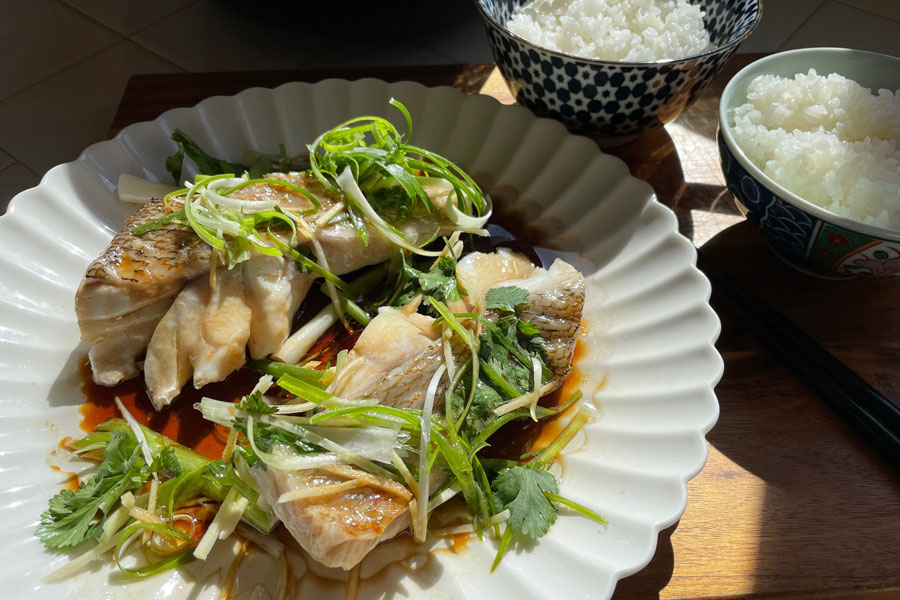
Aren’t you curious? Can a rice cooker bring out umami in rice? I wanted to know more, yes I did, so I took the Zojirushi NL-GAC10/18 for a workout and tried not to get overly ambitious while testing some of its features. Our family cooker is the IH (induction heating) model so it’s in a higher price range, but I was surprised to see how well this cooker did, especially with that umami setting.
Bear in mind the umami setting takes over an hour to cook rice, so time your dinner accordingly. Believe me, it’ll be worth the wait. I was using the bigger 10-cup version, so the first thing I wanted to try was the minimum amount of rice. Can it still cook rice perfectly with only 2 cups? Yes it did, and it did it well.
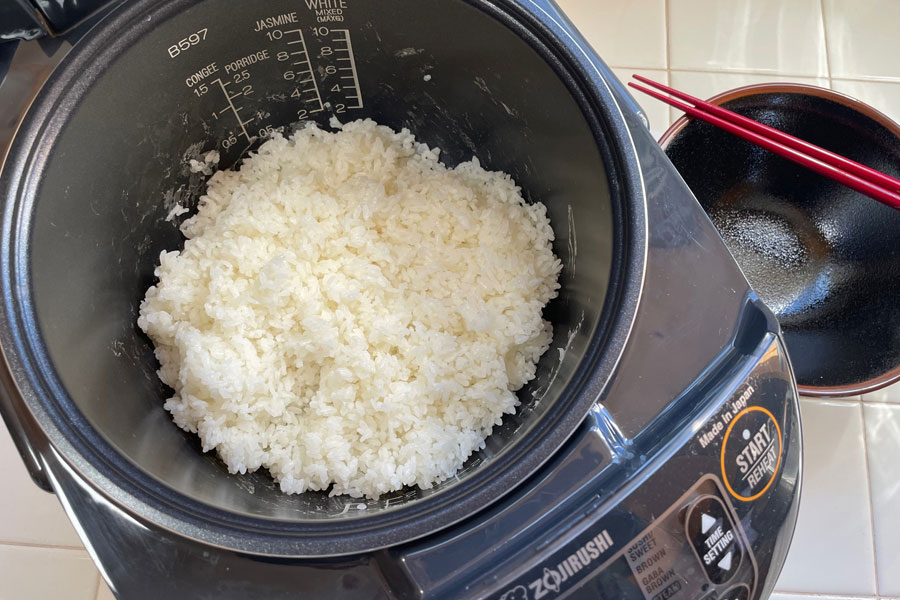 The rice really was “sweeter” and cooked with perfect texture through each grain. Not soft-mushy, not hard with too much bite, but firm and still fluffy. Umami is hard to describe, but it brought out a certain flavor to the rice that you can taste. If you buy good quality rice, this is the way to cook it!
The rice really was “sweeter” and cooked with perfect texture through each grain. Not soft-mushy, not hard with too much bite, but firm and still fluffy. Umami is hard to describe, but it brought out a certain flavor to the rice that you can taste. If you buy good quality rice, this is the way to cook it!
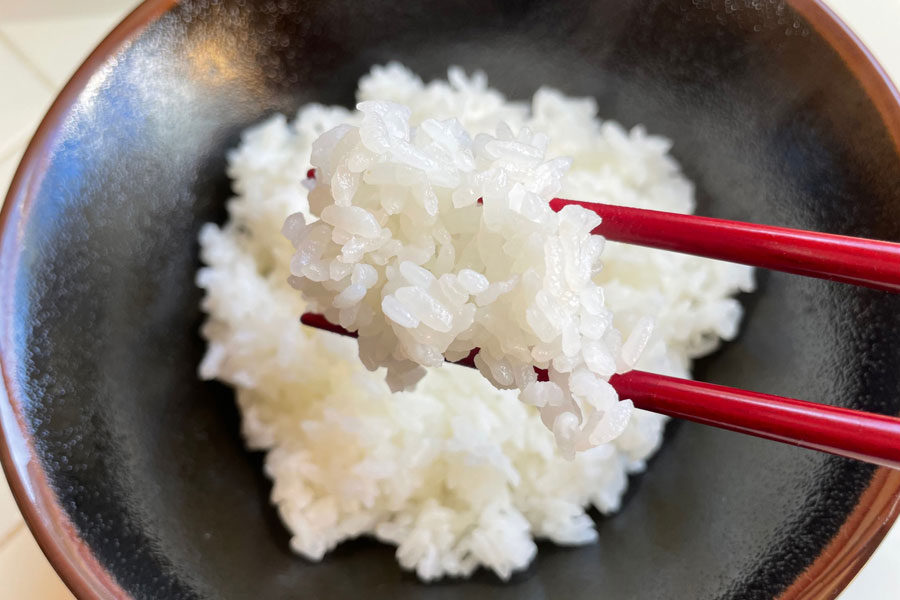
I’m assuming the extra time on this setting is to allow the raw grain to soak up the water longer, and after it’s done, to allow for extra steaming. The other thing I tried was to cook a larger amount of rice (5 cups) to make sure the results were the same. Again, it cooked consistently all the way to the bottom of the cooking pan. If you’re one of those people who believe rice is tasteless and has to be drizzled with soy sauce, try making a tasty entree and eat it with good, plain white rice. Give your taste buds some credit, man.
Another unique feature of this rice cooker is the steam setting and the steaming basket that comes with it. My larger 10-cup was ideal for this because the basket is large enough for almost any meal. It can be used as a “set it and forget it” stand alone steamer, but lazy me—I thought, what’s the point unless I can make rice at the same time? So my genius move was to cook fish using foil, which takes longer and can be steamed on the same timeline as a pot of rice.
My black cod (a meatier thicker fish is better; at least an inch thick) goes into the foil, elevated off the bottom with scallions.
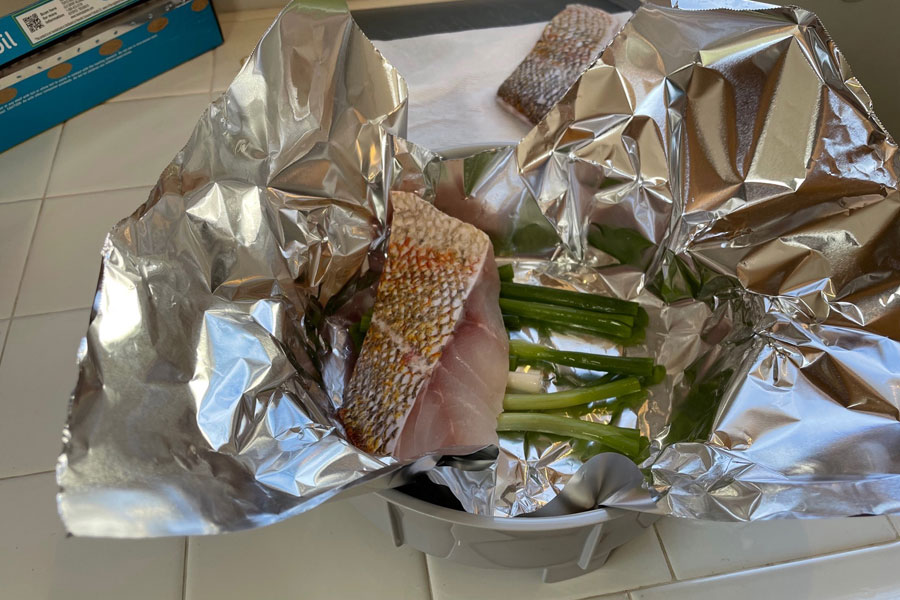
Here’s proof I did both at the same time. I made 2 cups of rice on the “Quick” setting, which took about 30 minutes. The fish in a foil packet takes longer than when it’s open-faced, so I’m calculating that the 30 minutes is about right to cook both without over-steaming the fish.
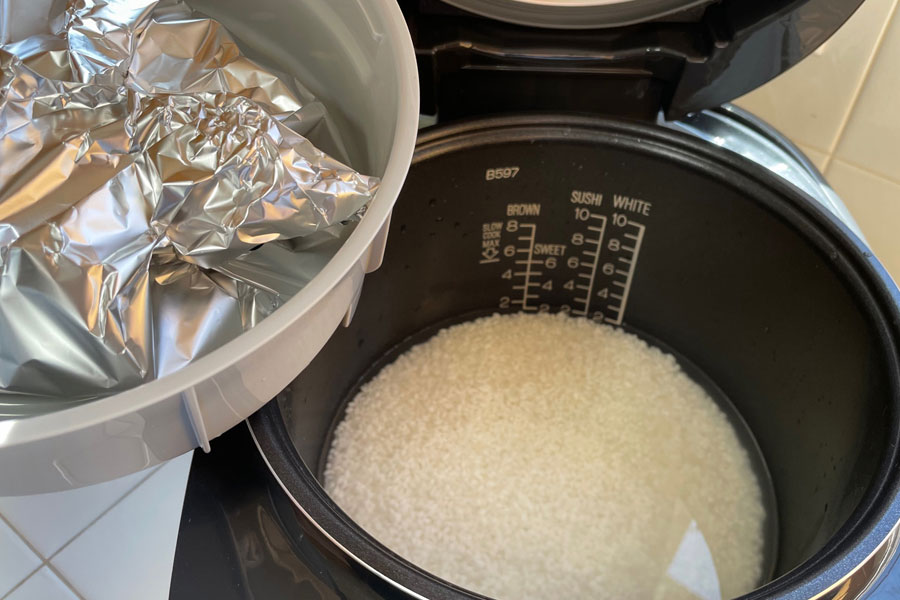
Whoa! Better than I thought! The fish looked tender.
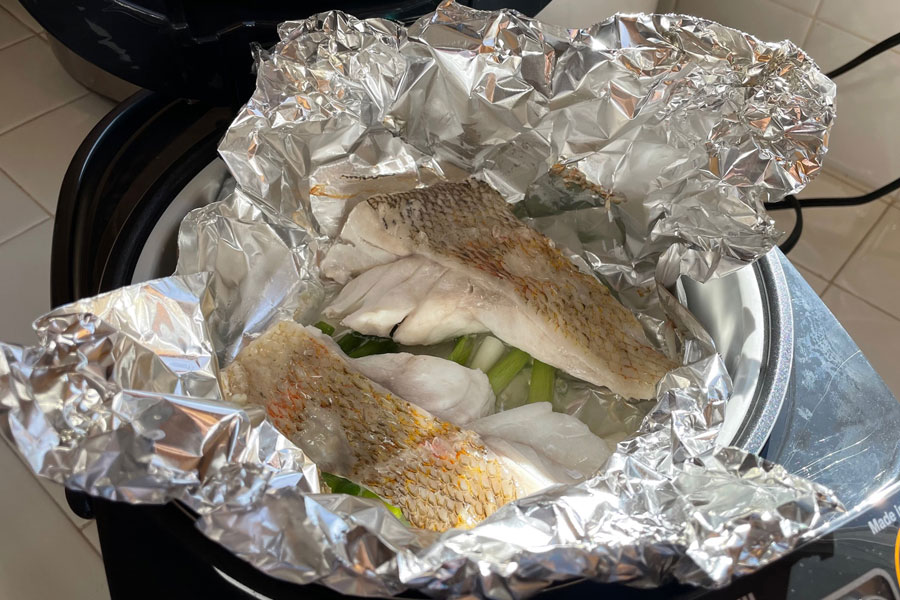
Since this is Chinese style, I made the sauce with soy sauce, sugar, oil, ginger and green onions. I heated it on the stove until boiling and poured it on my fish like a chef. Ha!
(I think it was supposed to sizzle, but mine was a little lame.)
But it still came out pretty tasty and it was so dang easy! Plus I had the rice already cooked to eat it with—that’s an A+ way to use this rice cooker in my mind.
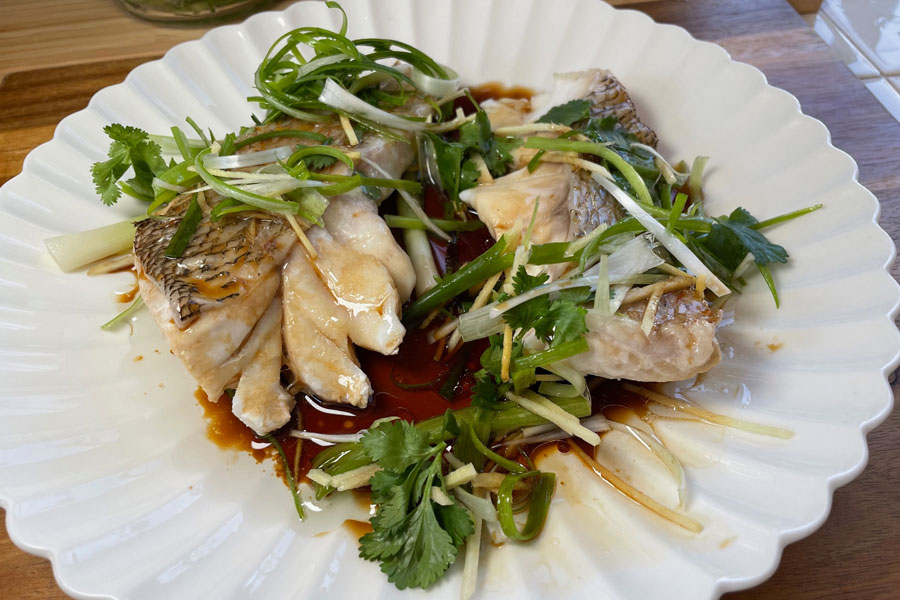
My last test was the Sweet/Sushi rice setting that I thought sounded interesting. I made a traditional Japanese dessert called ohagi, also known as botamochi depending on the season. If you live near an Asian market, you might be able to find sweet rice (mochigome) and canned adzuki bean paste (or you can make it from scratch if you want). Wash the rice good and fill the water to the “Sweet” line on the cooking pan; choose the Sweet/Sushi menu and let the rice cooker do the rest.
Once the mochi rice is cooked, you need to mash it up just enough to still see shapes of the rice grains. I used the bottom of a mug as a masher and it worked fine.
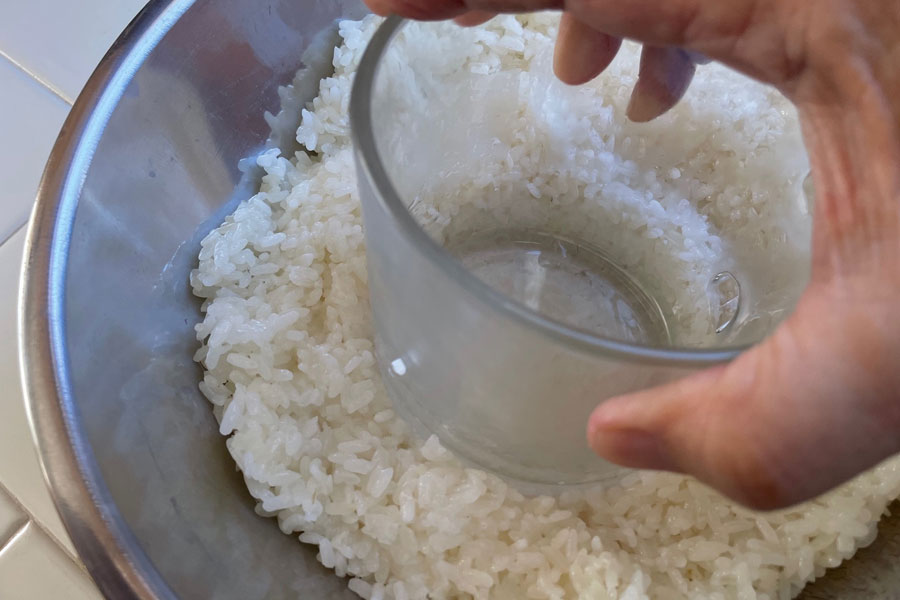
You can make 2 kinds of ohagi easily. Prepare some adzuki bean paste balls using a cookie dropper and get your kinako ready. Kinako is finely powdered soy bean flour that you mix with sugar to create Japanese style desserts.
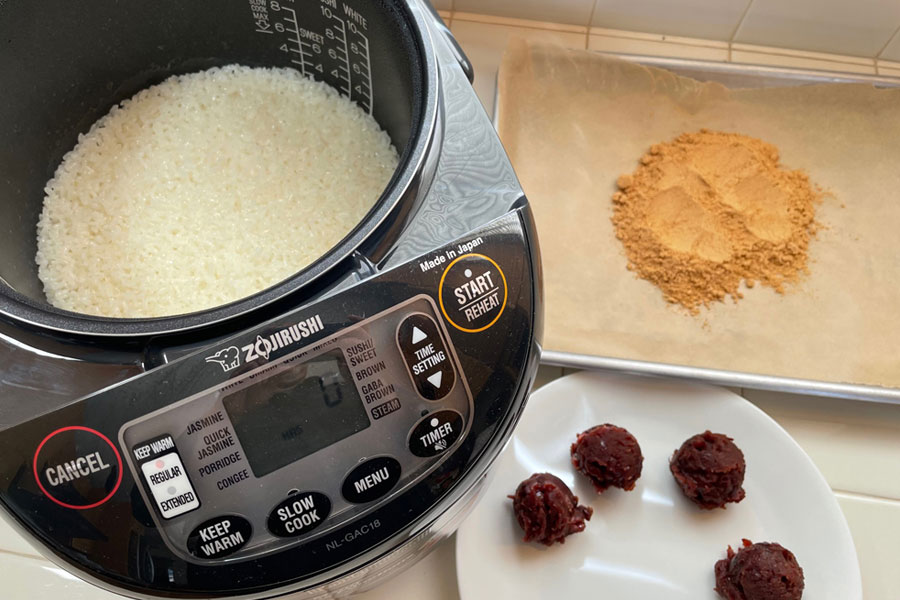
Now all you’re doing is molding them into balls with the adzuki. If you use plastic wrap it isn’t that hard. For the ones coated with adzuki on the outside, just get a bit of rice and drop it into the middle and form into balls. The plastic wrap will keep your hands from getting sticky. For the kinako kind, you just do the opposite, then roll the rice ball on a bed of kinako powder.
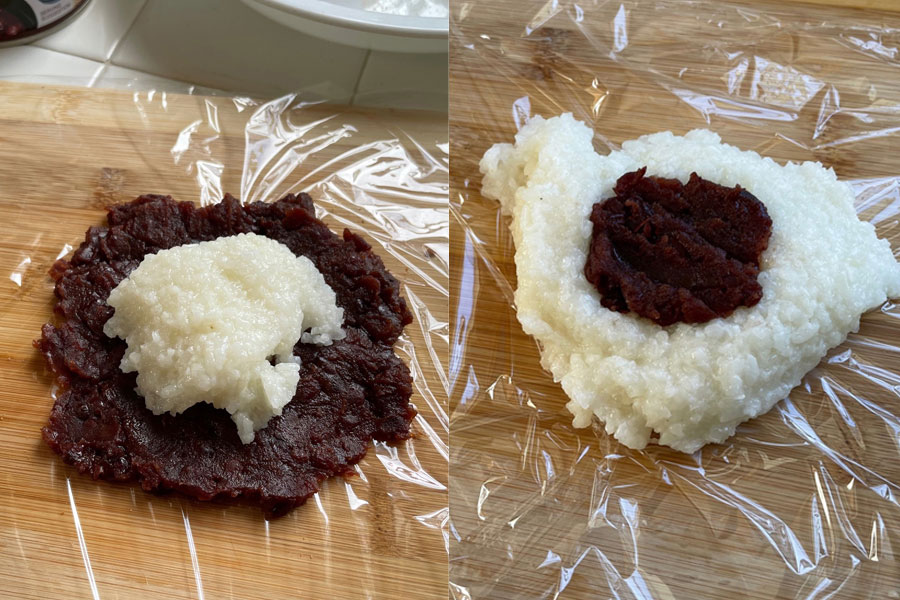
Boom! You’re done. Mine aren’t very cute—I’m sure you can do better. But if you love mochi, this goes great with green tea!
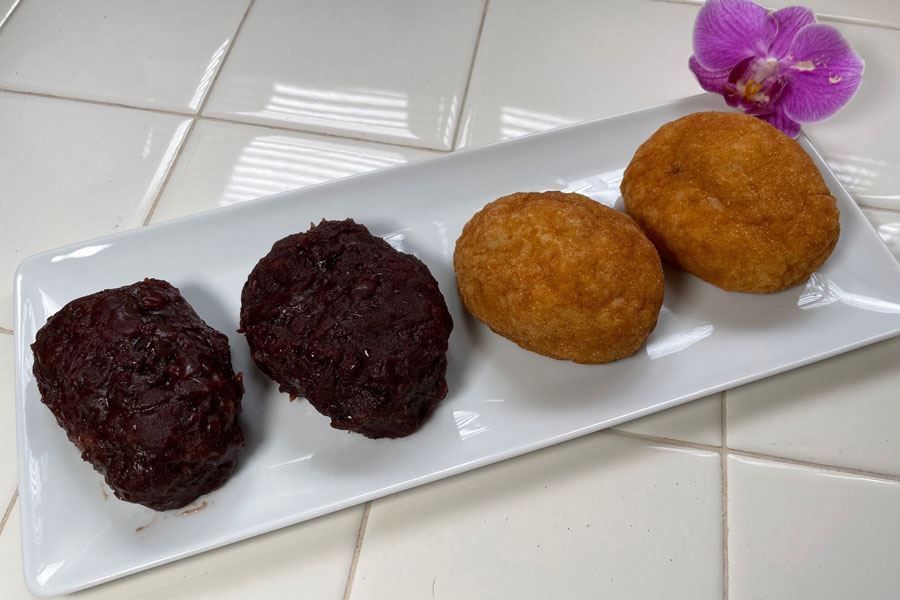

There are a lot more menu settings on this rice cooker that I didn’t try, so maybe someone else can try those. Good luck if you do!
Products used in this post: Umami® Micom Rice Cooker & Warmer NL-GAC10/18
Please note that these recipes were not tested by Zojirushi America.
All images by Bert Tanimoto ©2021
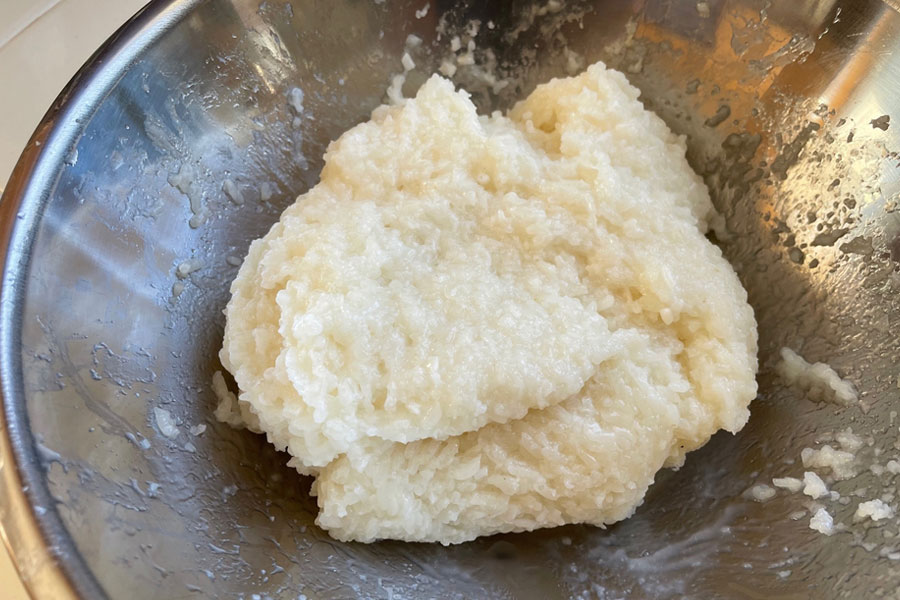
Leave a Reply